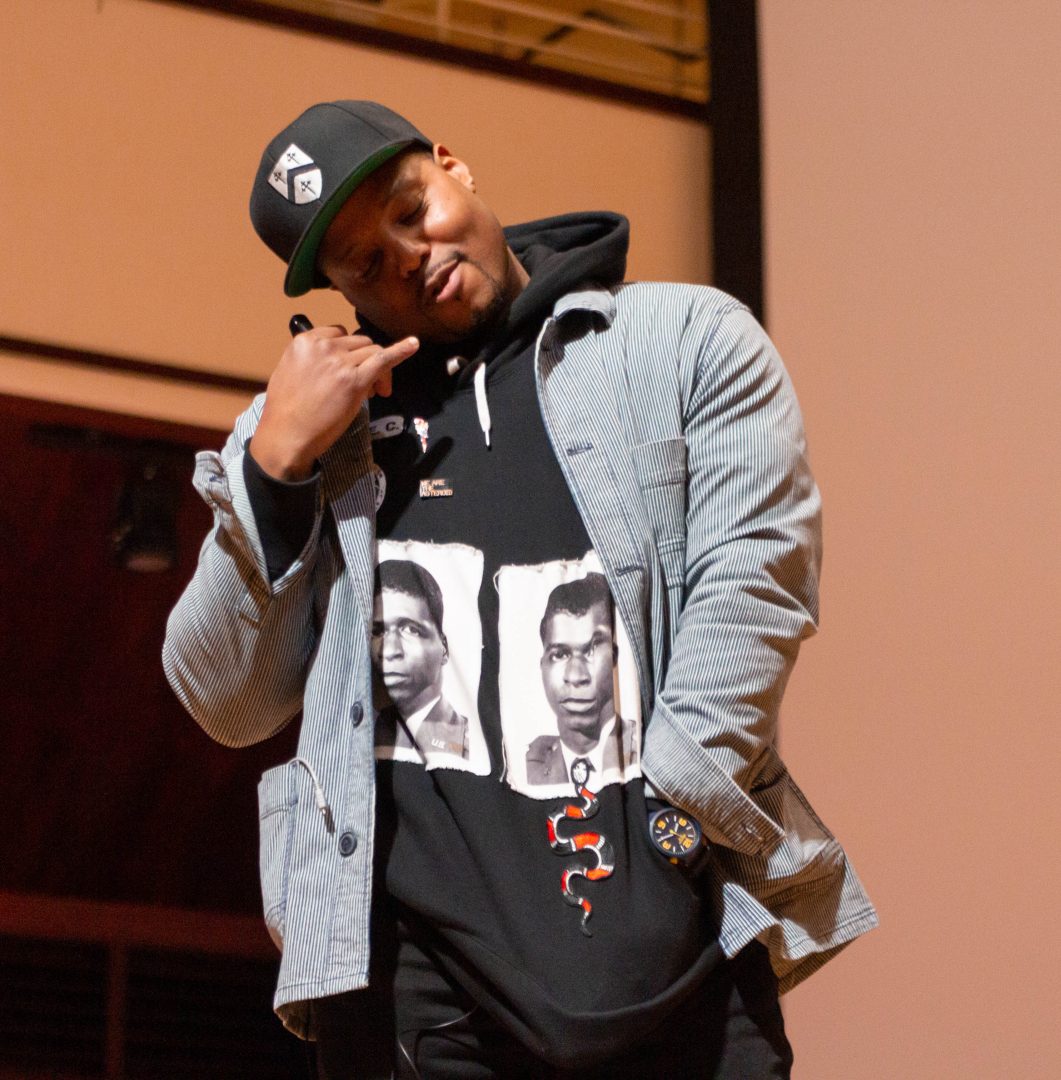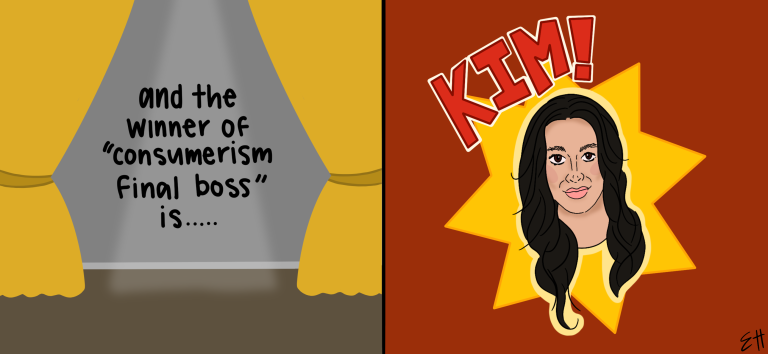From receiving bad grades as a child and relocating across the U.S. with a new family, artist Titus Kaphar overcame many other obstacles and continues to create his work that has been presented around the world. On Thursday, Nov. 7, the University of Indianapolis held lecture ‘Making Space for Black History’ featuring Kaphar in which he shared not only the thoughts behind his work, but his life leading up to now.
Kaphar shared stories ranging from birth to now and how specific obstacles allowed him to push through to become the artist he is today. Going to college was not his plan, Kaphar said, but after taking an Art History course, it was a whole new beginning. Kaphar followed junior-college with another college and eventually attended graduate school at Yale University after being rejected twice. Kaphar’s art consists of work from history reconfigured to display the African American role in that time period, rather than allowing that history to be forgotten. According to Kaphar, he noticed that African American people in paintings show the priiledge of other races in the painting, which gave him a base for his work.
“A lot of it is hard, a lot of it is [a] struggle, it’s [a] cathartic struggle, but it’s [a] struggle,” Kaphar said. “I make a lot of stuff that doesn’t work, I’ve destroyed a lot of paintings and you’ll never get a chance to see them. One of my professors told me once, ‘If everything you do succeeds, you are not trying hard enough,’ and I believe that I took that to heart. I try to just keep pushing myself, do things I haven’t done before. That’s why I work with paintings, I work with sculptures, I work with films I do these things because I’m wanting to tell these stories because it makes sense for the content itself, that’s the biggest struggle daily.”
Kaphar has displayed his work in a variety of places, he said. Kaphar showed his work at Princeton University and had a piece in Time Magazine titled, “Yet Another Fight for Remembrance.” With the piece from Time Magazine, Kaphar portrayed protestors streaked in white paint to show the idea of the protestors figuratively being erased from our country’s history. Kaphar said his piece at Princeton depicts this idea that our country struggles with having “two conversations at the same time.” This piece was apart of Kaphar’s series, “Monumental Inversions,” and according to an article about the monument from artsy.net, “The family [in the piece] is meant to represent not only the people that [Samuel] Finley [fifth president of Princeton University] enslaved during his tenure, but also the many other chattel slaves held by professors and the families of students since the university’s founding.”
While each of these pieces depict more serious issues, Kaphar has created many pieces that are personal to him and his family history as well. Kaphar displayed a piece of his work titled, “My Loss,” from the Jerome Project. Kaphar depicts a mugshot of his father behind ashes to imply the approximation of how much of his father’s life was wasted in prison due to epidemics in our country, such as drugs. Kaphar said he has created his own foundation in order to fight epidemics like these and to prevent this from happening to more children from these failing communities.
The foundation called NXTHVN, Next Haven without the vowels Kaphar said, is a center for students around New Haven, Connecticut to have jobs or internships with aspiring artists.
“It’s been really successful [NXTHVN]. The children, the high school students, the young men and women that participate in our program are how we get the rest of the people because our high school students are the ones who are walking their parents through our exhibition saying, ‘Mom, I work for this artist, let me tell you about what he’s doing,’” Kaphar said. “We choose artists whose work speaks to the issues that we’re concerned about…. So this is our second year, the first year we had 166 applications for seven spots, we had 260 [applications] this year.”
According to Kaphar, having creativity will allow for poor or failing communities to endure something better than what they’ve had before. Kaphar said without art, he wouldn’t have made it through school because nothing else has inspired him the way art has, and he hopes to do the same for these children who may not have goals set yet. Kaphar said that having a creative outlet in communities is essential.
“No community needs creativity and art more than poor communities, whether they’re here or there, we ask people every single day to reach for the American liberty, something they’ve never seen,” Kaphar said. “How can you do that without creativity? How can you do that without imagination? We need to imagine a future for ourselves and in many cases, nobody around us is living. ”







